WHITEWATER REGION (Beachburg) — Cameron Dube is a cycling enthusiast. Not only does he bike to and from work, even in the winter, which is from Beachburg to Pembroke, he participates in various cycling events throughout the year, and is a main organizer of the Spring Chicken event in Beachburg. Recently, Cam recently cycled from Banff, Alberta to Antelope Wells, New Mexico, which is right at the Mexico border.
It was the 20th edition of the Great Continental Divide Mountain Bike Race. There were 175 cyclists from all over the world participating in the event, Cameron said. A mountain bike has a minimum of 2”-wide tire with good tread on it.
“The actual continental divide trail is an old hiking trail and people still hike it,” he said. “There’s a few different alterations for the mountain bike version, but we mostly follow the continent trail.”
Having said that, Cam noted since cyclists are on mountain bikes, the route designers try and keep them off the main roads as much as possible.
“For 90 percent of it, you’re on gravel roads, old railroad tracks, old tractor trails,” he said.
It’s up to each cyclist to navigate the route, Cam said, adding, the route is not signed. A week before the Grand Depart, cyclists are emailed a GPS file, which is then uploaded to the cyclist’s GPS unit, he explained.
“You need to follow that exact route if you want to be considered part of the race,” he said.
The race is 4,300 kilometres and Cam finished on his 24th day. While Cam was hoping to finish in 21 days, he realized right away that it meant hard riding for him the whole way, with no opportunity to enjoy the vistas. Instead of riding about 200 kilometres a day, he slowed it down a pace, and averaged between 180 to 190 kilometres each day.
“I don’t know when I’ll be back to do this again,” he recalled. “If I take it a little bit easier, I’ll have more experiences along the way in terms of seeing the sights and meeting all these people from all over the world, and the towns, villages that you go through.”
The Grand Depart was held at 8 a.m. on Friday, June 8 in Banff, Alberta.
“We all gathered at the Banff Springs Hotel and away we went,” he said.
The cyclists are supposed to be fully self-supported, Cam said. This means cyclists carry clothing, food, camping gear, etc. Cam’s bike is about 22 pounds on its own and he had about 20 pounds of gear. He carried three to five water bottles at a time, and the more south he went, there was record heat, which made it extremely challenging.
“New Mexico was the most challenging, but the most scenic and beautiful too of the States we went through because it’s unlike anything we have here,” he said. “It was 106F on a couple of days, and it was a 100-year record.”
It was while in this State the most water was carried by each cyclist because the springs and wells between towns and villages were dried up, he recalled.
“Water was about 200 kilometres apart,” he noted.
Cam noted that throughout the race, the cyclists yo-yo back and forth. Explaining, he said you meet up with some people and you might ride for a few hours or a day with them. And then, they’ll stop and you might want to continue, or vice versa.
“It was really neat,” he said.
It was great to see how the communities along the route mingled and helped the riders, Cam said.
“There was trail magic,” he said, explaining, “There’s some spots along the route where locals have left out a cooler with a sign that reads ‘For Divide Racers, Trail Magic,’ and you’ll open it up and there’ll be cold Gatorade in there, or sandwiches, yogurt.”
Some of the locals who are right on the route even encourage riders to camp at their place or even take a shower. Many of the businesses get involved, as well, with many of the communities similar to Beachburg.
“Any sort of economic support you can give them coming through they appreciate it,” he said.
Since it’s not possible to carry everything you will need for the ride, that’s where the businesses come in. Cam noted it wasn’t unusual to spend $30 on junk food at a gas station. For himself, a minimum of 5,000 calories a day was required.
“An average day is riding 12 hours,” he said.
However, that doesn’t include the time a cyclist is stopped, which could be another two or three hours, he added.
“You would eat anything you could get your hands on,” Cam said.
A healthy eater, he was eating food he wouldn’t consume on a regular basis, such as precooked hot dogs on the hot rollers, packaged donuts, packaged cheese croissants, beef jerky, chips, chocolate bars.
When he thinks back to what he ate at times, Cam said while it wasn’t healthy, the calories were needed to keep the body going.
“You go into a restaurant and you order the most high calorie meal you can, and you get a second burger or two to go for later on that night,” he recalled. “You’d eat your dinner at the restaurant, and by the time you got into your tent at 9 or 10 at night, you were starving again, so you were happy to have a whole burger or two.”
Cam said he had a fair idea of the ride from a friend in Petawawa who had done it, and he also lived in the mountains in BC.
It wasn’t unusual to cycle uphill for three hours at a time, and this could happen two or three times a day, he recalled.
“I think we crossed the Continental Divide 28 times,” Cam said.
The trail is designed to be tough, he said. Of the 175 participants who started out, he said just over 60 of them completed the trail. Cam completed the ride smack-dab in the centre of those who finished it.
“It is a race, informal or underground race, but the top 10 guys are racing hard, they’re sleeping three to four hours a night minimum, and they’re riding sometimes just over 300 K a day,” he said.
The riders from Australia “really cleaned up” at the finish line, he said.
There is no financial reward, it’s completely self-supported, unsupported, he said.
“You’re racing for bragging rights,” Cam said.
There are numerous reasons for someone not finishing, he said. They could be mentally or physically done, or their bike’s just not able to go any further, or they had to get back home for any number of reasons.
As someone who enjoy bike packing, he said he’s cycled in Iceland, British Columbia and around this area.
“It’s one of those bucket list rides, because to get to some of the places that we did get to, you could only get there on this sort of planned route that they give you, super remote, you’d see no one for eight hours, through big mountain valleys,” Cam recalled.
Each day was tough, some more than others, he said.
It’s mind over matter, because the tough times don’t last, just push through them. Cam said when his knee was bad, his mind was going in the wrong direction. Other than that, he remained positive, especially since he had no time deadline.
“I wanted to push myself physically and mentally on this and be destroyed at the end of each day, but I didn’t want to run it too far where I couldn’t get out of my tent the next day,” Cam recalled.
In January, Cam had decided to participate in the race. From a packing perspective, he knew what was needed. He also was aware not to plan for day-to-day, just go day by day. The weather, the route, Mother Nature, could all interfere. The route co-ordinators, as well as the locals, would let the riders know if there were route changes for whatever reasons, including forest fires.
The States the cyclists travelled through were Montana, Idaho, Wyoming, Colorado and New Mexico, while the provinces were Alberta and just a corner of British Columbia into the town of Fernie.
It was in Fernie where he met up with former residents of Beachburg – Jeff and Jane Johnson. He said it was possible to follow the riders through Spot Device – a GPS beacon – on trackleaders.com which is what the Johnsons were doing.
“You could go on in real time and see where I was, how fast I was moving, my average speed, the temperature in the area, the whole bit,” Cam said.
“Jeff and Jane knew where I was, and when I was coming into Fernie, I got a message from Jeff saying, hey, looks like you’re coming into Fernie, come and say hi, which was nice,” he recalled.
But, it wasn’t just people the riders knew who would contact them. He recalled people parked on mountain tops who would roll down their windows, shout out his name and encourage him to ride on.
The highest elevation was 12,000 feet at Indiana Pass in Colorado, he said, adding, people can experience symptoms of altitude sickness. However, since the cyclists didn’t just reach that altitude all at once, it was a ride of about two weeks to reach that point, no one became ill, as far as he knows.
Talking about the mountains, Cam said they were challenging, because there aren’t any mountains in this area to train on.
“I wasn’t able to climb hills to the extent I was going to be getting into,” he recalled. “I knew the size of the climbs out there, like 20 kilometre climbs, but very hard to train for that here.”
To train in this area, Cam also did a few overnight rides.
“I rode a lot with my fully loaded bike, with the gear on it,” he said, “just for extra weight. I rode into the winds as much as I could.
“I did all the things you don’t want to do on a regular basis,” he said with a laugh. “I went to the Foymount hill a couple of times and spent a few hours there doing some repeats.”
While he did not get injured on the trail, Cam noted his left knee almost did him in, giving him trouble for about a week. He put athletic tape on it and for the final leg of the journey, it wasn’t bad at all.
“It was a bit worrisome,” Cam recalled. “There were a couple days where I was if this turns into a permanent injury, I don’t want to continue.”
While it’s still not painful yet, he hasn’t stressed the knee, even though he participated in the 60-kilometre gravel ride for the Tour de Whitewater on July 7.
Cam noted there were a few cyclists who crashed going downhill, but he wasn’t one of them.
Looking back at the weather, Cam said there was a mixture of everything.
“We had those extreme heats, huge winds, either the wind was stopping you dead, where you sit down for an hour and hope the wind changed, or the wind pushed you so strong you were a couple of days, barely pedalling, and you were moving 40 kilometres an hour, the wind is pushing you so hard,” he said. “You loved those days.”
But Mother Nature wasn’t always so kind. There was snow in Canada, hail, dust devils, even forming right under your bike.
“You’re just sanded, your eyes, your teeth, gums, everything ,just blah,” he said.
In the mountain passes, there was snow and the riders either pushed or carried their bikes, while in other areas there were trees and rocks that came down the mountain during avalanches, which also meant carrying the bike, Cam recalled.
There were some roads, that when they get wet, the cyclists push the bike because of the mud.
“I lucked out,” he said. “I used the fat bike frame, but put a skinnier tire on it.”
This allowed for mud to build up on the tires with plenty of room to spare, he explained. He recalled passing about 12 riders.
His furthest ride in one day was around 240 kilometres while the shortest was around the 120 kilometre range, because it was 4C and just pouring rain. There were about five cyclists coming into Island Park, after being in the rain for a few hours, and there was a pub with rooms to rent out – which is what they did for the night.
“It was deemed a wet start and a hot finish this year,” he said. “Wetter than normal for the first bit, and then hotter than normal for the final.”
There was also plenty of wildlife to see throughout the ride.
“We saw grizzles on the first day,” he recalled. “It was common to see black bear all the way into New Mexico. There were never any issues. I saw mountain lion prints, I saw one. Some people saw them at night, just the eyes.
“Elk deer, pronghorn, you name it, they were out, every day we saw them.”
Cam thanks his family and friends for the ongoing cheering and support online.
“The Cranky Kids were good, they sent me a photo from their first night with a big sign, Go Cam Go, all the kids and volunteers – it was pretty awesome to see that.
“It was nice to know people were watching and cheering me on,” Cam said. “It kind of keeps you motivated to keep pushing to finish and then to get back and see everybody.”
Cam is now decompressing.
“It was three-and-a-half weeks of intenseness and now it’s just time to absorb everything that happened and the experiences. Try and take from it as much as I can, all the learning, self-discovery, all that good stuff.”
It’s now time to get back to riding the area trails.
But, there are other cycling adventures awaiting Cam, just not many that go that distance. There are races like this (Great Continental Divide) all over the world, Cam said. There’s one in Scotland, the Highland 550, which is 550 miles, versus 2800 miles (4,300 kilometres).
“That’s why I do them, to see these places and experience these different landscapes and environments,” Cam said, adding, “That’s what it’s all about for me.”
If you are interested in seeing more photos of Cameron’s adventure, please check out his facebook page.


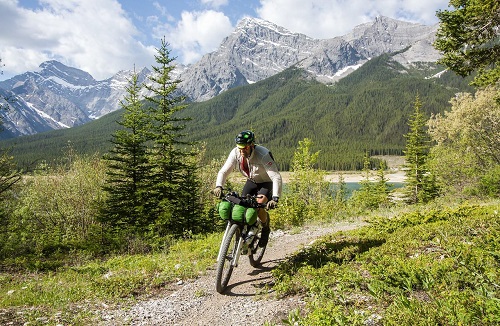
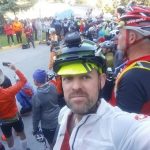
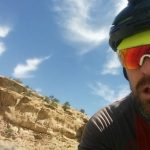
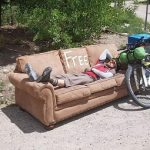
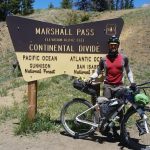
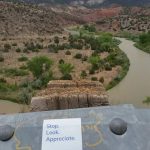
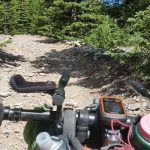
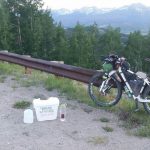
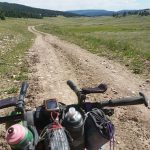
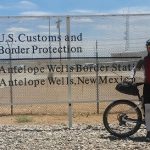




![Kenopic/Smith Auction [Paid Ad]](https://whitewaternews.ca/wp-content/uploads/2018/10/advertising-100x75.jpeg)

